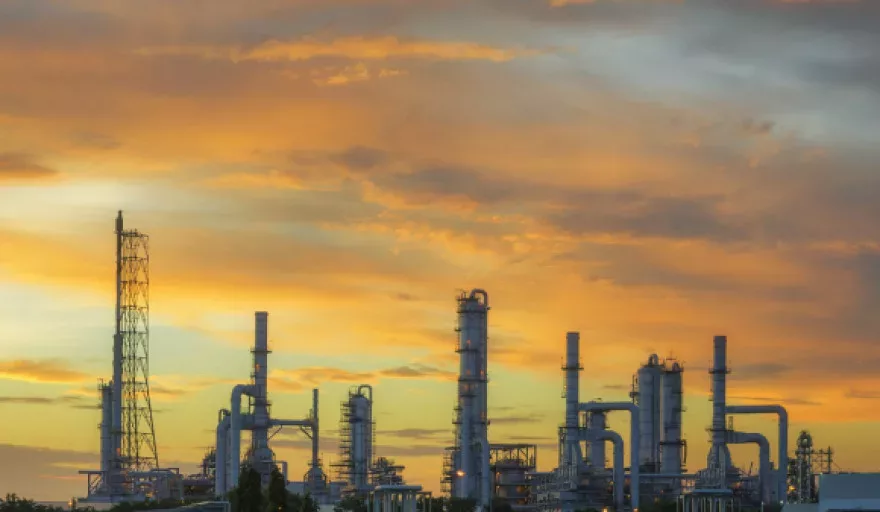The need for Iran to invest in its oil & gas sector to maintain and boost output is obvious. In a bid to create an environment more conducive to attracting foreign investment, the oil ministry in Iran has started working on a new contract model for international companies seeking to become involved in domestic oil field developments, which will be unveiled in London in December this year.
The terms of the new Iran Petroleum Contract (IPC), as it has been called, have been leaking out in recent months to whet the appetite of potential investors. It is set to replace the traditional buyback scheme, which was first introduced in the 1990s in an attempt to bridge the gap between the country’s need to attract foreign oil & gas companies, and a ban on private and foreign ownership of natural resources under the Islamic republic’s constitution.
The scope of Iran’s buyback contracts covers both field exploration and development. They are essentially risk service contracts, under which the contractor is paid back by being allocated a portion of the hydrocarbons produced as a result of providing services. The pay-back period tends to be short, ranging between five to seven years, after which a developed field will be handed over to the National Iranian Oil Company (NIOC). Buyback schemes are based upon a defined scope of work, a capital cost ceiling, a fixed remuneration fee and a defined cost recovery period.
Although Iran has updated the buyback model twice since it was first introduced the contracts have been widely unpopular with International Oil Companies (IOCs) due to their inflexibility and limited returns. The IOCs have in the past expressed their concerns about the buyback model as being prone to huge potential losses because it didn’t include many options to put a ceiling on its capital costs. Additionally, the way that the contracts are structured means that at the time of signing, long term pre-defined operating targets are set that do not take account of prevailing market conditions, new drilling plans, reserve estimates, financing costs, etc.
The new IPC is expected to do away with many of these criticisms as it varies markedly from the existing buyback schemes in that it proposes the establishment of a joint venture between NIOC (or one of its subsidiaries) and a foreign partner for field exploration, appraisal, development and – for the first time since 1979 – production.
There will also be a provision for the IPC to extend into enhanced oil recovery (EOR) phases. According to the US Energy Information Agency, “this modification aims to rectify issues with field decline rates by including the IOC in the production and recovery phases, while optimising technology and knowledge transfers.”
Unlike the short nature of the buybacks, the IPC model will offer extended contract duration of 20-25 years, allowing for much longer cost recovery after first production. On top of this, there will be a risk-reward element linked to the complexity of fields that pays companies higher fees for ‘very high risk’ on- and offshore fields compared with ‘low-risk onshore’ fields.
The IPC is also designed to take advantage of foreign companies’ marketing expertise and give Iran access to their supply network to find an export market, in particular at a time when the Islamic republic has lost some market share.
While IOCs won’t be able to book oil & gas reserves on their balance sheet under Iranian law, it is understood that the IPC will make some provisions allowing investors to incorporate revenues generated from Iranian oil & gas resources in their financial reporting, which for stock market-listed companies in particular would be an important incentive when mulling involvement in the country.
Other significant amendments versus the buyback model include an ‘annual work program and budget’ to be approved by a joint venture development committee (JDC) made up of officials from the partner companies. This is an important change as the fixed cost approach under the buyback model meant that cost for projects going above budget couldn’t be recovered, thus eroding profitability.
Overall, the increased flexibility and improved terms offered under the IPC will provide some incentive for foreign investors to consider a return to Iran’s oil & gas sector if and when sanctions are lifted. However, challenges remain. Continental Energy’s Shoar says, among other issues, IOCs may be concerned over too much interference into operations by the local joint-venture party, in particular when the foreign partner shoulders all project-related risk.
There can be little doubt that interest among international firms in developing Iran’s hydrocarbon resources post sanctions is enormous. A reopening of the country’s energy sector would likely lead to a bonanza for oil companies not seen since the opening of Iraq in the post-Saddam Hussein era. The difference would be that the Islamic republic in many ways is a safer bet than Iraq given its politically stable environment and more diversified economy.
To be sure, the risks and challenges associated with becoming involved in Iran’s energy sector would still be large; but likely to offer sufficient upside to attract international interest. In some way, Iran’s new contract model resembles the one that has been successfully applied by the Kurdish Regional Government (KRG) in neighbouring Iraq.
By Sean Evers, Managing Partner, Gulf Intelligence


















